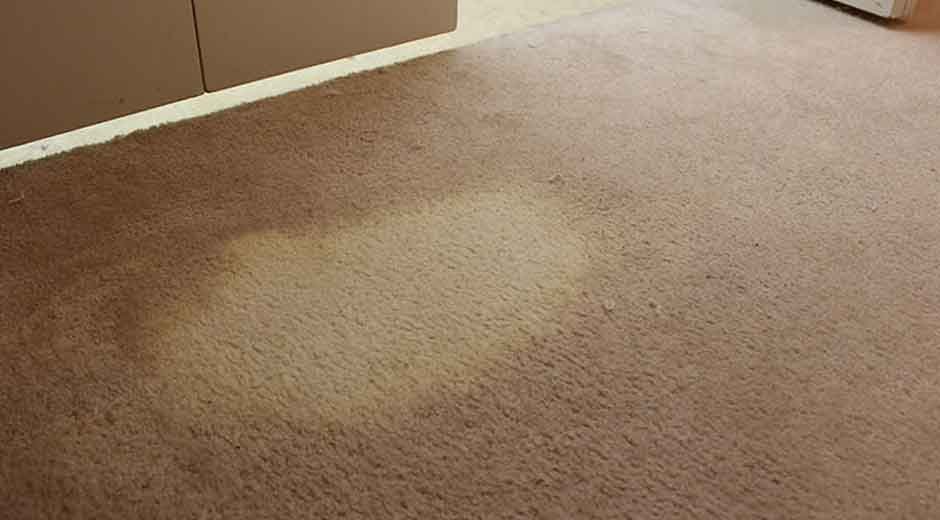Have you ever struggled with a smudge that just won’t budge, no matter how hard you scrub? Some spills vanish with a quick wipe, while others cling to your rug like a magnet.
From ink to red wine, different stains react in surprising ways, which makes getting rid of them either a breeze or a battle.
Don’t worry, though. Understanding these factors will give you the power to fight back. So, keep reading to discover what makes some stains permanent and, more importantly, how to stop them from ruining your carpets.
Types of Stains
The first step when disaster strikes is identifying what you’re dealing with. This bit of detective work makes all the difference in helping you choose your cleaning method.
Oily Smudges
Those pesky oil-based marks from butter or salad dressing can be particularly stubborn. They often need a specific cleaner, like a homemade mixture that includes baking soda or dish soap.
Just go easy on the scrubbing. It’s tempting to attack the spot like it personally offended you, but too much elbow grease can push the oil deeper and rough up your carpet fibres.
Liquid Stains
Spilt your drink? Classic. Whether it’s a soft drink, tea, or that glass of wine you were ‘just resting’ on the arm of the couch, liquid stains tend to soak right into the fibres and backing before you’ve even grabbed a towel.
Start by blotting with paper towels and focus on absorbing as much liquid as possible. Once the area is mostly dry, hit it with a gentle water-based detergent and keep dabbing until the stain lifts.
Ink and Paint Marks
Now, we’re in tricky territory. Ink and paint stains bond quickly with fabrics, and once they’ve settled in, you’re in for a battle. That said, if you treat them straight away, you’ve got a solid chance of saving the situation.
For ink, rubbing alcohol can work wonders here. Just dab it on lightly and keep working from the outside of the stain toward the middle so it doesn’t travel.
When it comes to paint, clean it straight away with a damp cloth and a little soap if it’s water-based. However, if you’re dealing with oil-based paint, use a small amount of mineral turps, rinse the area with clean water, and blot it dry.
Carpet Material
Not all fibres are created equal. Some are tough as nails, while others absorb stains faster than a sponge. So, knowing what you’re working with is half the battle.
Synthetic fibres, like nylon or polyester, are built to handle kids, pets, and dinner parties gone wrong. But don’t get too confident. Even the sturdiest synthetic fabric can end up with a permanent reminder of your favourite vintage if you don’t act quickly.
As for natural materials, like wool, these add a soft and luxurious feel to your home, but they are usually more absorbent and prone to staining.
The weave of your carpet also makes a surprising difference. A tighter weave gives liquids fewer places to sneak into, making it naturally more stain-resistant. Looser weaves, on the other hand, are like open invitations for smudges to move in and make themselves comfortable.
Setting Time
When it comes to stains, timing is everything. Some smudges bond with the fibres instantly, while others give you a bit more time to react.
Coffee, for example, gives you roughly 5-10 minutes before it starts making itself at home. Red wine sets in about 10 minutes, and after that, it’s basically there to stay.
As for pet accidents, you’ve got about five minutes to get moving before that unmistakable odour decides to stick around for the long haul.
Surprisingly, mud is actually better left alone until it dries completely. Just vacuum it up first, then deal with the leftover marks.
If the stain had time to set, don’t stress, though. You can still get help from a professional. All it takes is a quick Google search, and you’ll be able to find the best carpet cleaner in your area.
Sometimes, getting experts involved is the quickest way to make your carpet look brand-new.
pH Levels and Chemical Reactions
It’s time to get a bit scientific, but don’t worry; you don’t need a lab coat to keep up.
Every stain sits somewhere on the pH scale. Acidic smudges, like red wine, coffee, or pet accidents, need a gentler, more alkaline cleaner to neutralise them.
Alkaline ones, such as mud or ink, require something on the milder, slightly acidic side. Get this balance wrong, and instead of fixing the problem, you can make it worse.
So, your safest bet is to go for neutral cleaners. These all-rounders are great for most everyday spills and are far less likely to cause damage.
When trying out a new cleaning solution, always test it somewhere out of sight first, like behind the couch or under a piece of furniture. If it bubbles excessively or starts to smell, that’s your cue to stop immediately.
Temperature matters, too. Warm water speeds up chemical reactions, but that’s not always a good thing. As a general rule, start with cold water. You can always work your way up if needed, but it’s a lot harder to undo damage.
Preventive Measures
Prevention might not sound as exciting as heroic last-minute rescues, but it’ll save you a lot of scrubbing, sighing, and ‘why me?’ moments down the track.
Start by spraying a protective treatment over your carpet. It’ll repel spills, block stains, and make cleanup a whole lot easier.
Most professional carpet cleaners can apply one for you, or you can grab a DIY version from a home store if you’re feeling handy. Just remember to reapply the product once a year, especially in high-traffic zones, like hallways or the living room.
Other simple adjustments can also make a big difference. For example, you can keep eating areas separate from carpeted ones, stick to a ‘no-shoe’ rule, and place decorative runners in areas with high foot traffic.
As an additional measure, think about fitting your windows with UV shields. Sunlight might look lovely streaming through your windows, but over time, it fades carpets and weakens protective coatings.
Conclusion
One stray splash of coffee doesn’t have to spell the end for your carpet. With a few simple tricks, you can stop most stains from becoming permanent.
So, keep your supplies close, act fast, and don’t give these smudges time to set. That way, your carpet will always be photo-ready—no filter required!






